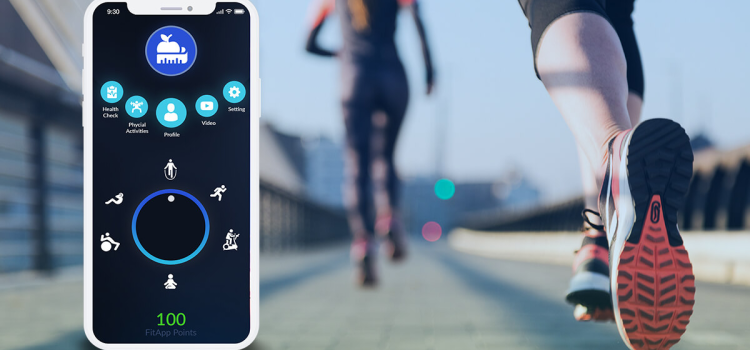
In recent years, fitness apps have revolutionized the way we approach exercise and wellness. With the rise of smartphones and wearable technology, these digital tools have become an integral part of many people’s fitness routines. This article delves into the latest fitness apps trends, exploring how they are reshaping our exercise habits and overall health.
The Rise of Fitness Apps
Fitness apps have surged in popularity, offering a convenient and personalized approach to exercise. These apps cater to a wide range of fitness levels and goals, from beginners looking to get in shape to seasoned athletes seeking to optimize their performance. The accessibility of fitness apps means that users can work out anytime, anywhere, without the need for a gym membership or personal trainer.
Personalized Workouts and Training Plans
One of the most significant trends in fitness apps is the emphasis on personalized workouts and training plans. Modern fitness apps use algorithms and user data to create customized exercise routines tailored to individual needs and preferences. By inputting information such as age, weight, fitness level, and goals, users can receive workout plans that are specifically designed for them.
For example, apps like MyFitnessPal and Fitbit offer personalized fitness plans that adjust based on user progress and feedback. This level of customization ensures that users stay motivated and engaged, as their workouts evolve with their fitness journey.
Integration with Wearable Technology
The integration of fitness apps with wearable technology is another trend that is transforming the way we exercise. Devices such as smartwatches and fitness trackers can monitor various health metrics, including heart rate, steps taken, calories burned, and sleep patterns. When synced with fitness apps, this data provides users with a comprehensive overview of their health and fitness.
Apps like Apple Health and Google Fit seamlessly integrate with a wide range of wearables, allowing users to track their progress in real-time. This integration not only enhances the accuracy of fitness tracking but also provides valuable insights into overall health and well-being.
Virtual Coaching and Classes
The COVID-19 pandemic accelerated the adoption of virtual fitness solutions, and this trend shows no signs of slowing down. Fitness apps now offer virtual coaching and classes, enabling users to access professional guidance and workouts from the comfort of their homes.
Platforms like Peloton and Nike Training Club provide live and on-demand classes led by expert trainers. These virtual sessions cover various exercise types, including yoga, strength training, cardio, and more. The convenience of virtual coaching allows users to fit workouts into their busy schedules, making it easier to maintain a consistent fitness routine.

Social Features and Community Support
Social features and community support are becoming increasingly important in the fitness app landscape. Many apps now include social components that allow users to connect with friends, join challenges, and share their progress. This sense of community fosters motivation and accountability, as users can support and encourage each other on their fitness journeys.
Apps like Strava and Fitocracy leverage social features to create a sense of camaraderie among users. Whether it’s competing in a virtual race or celebrating a friend’s milestone, these social interactions enhance the overall fitness experience.
Gamification and Rewards
Gamification is a powerful trend in the fitness app industry, making exercise more engaging and enjoyable. By incorporating game-like elements such as points, badges, and leaderboards, fitness apps motivate users to stay active and achieve their goals.
For instance, apps like Zombies, Run! turn workouts into immersive adventures, where users complete missions and earn rewards by running. This gamified approach adds an element of fun to exercise, making it more appealing to a broader audience.
Nutrition and Holistic Wellness
Fitness apps are increasingly focusing on holistic wellness, integrating features that address not only physical fitness but also nutrition and mental health. Many apps offer meal planning, calorie tracking, and nutritional advice to help users make healthier food choices.
MyFitnessPal, for example, provides a comprehensive database of foods and their nutritional information, allowing users to log their meals and monitor their dietary intake. Additionally, apps like Calm and Headspace incorporate mindfulness and meditation practices, promoting mental well-being alongside physical fitness.
Data-Driven Insights and Progress Tracking
Data-driven insights and progress tracking are at the core of fitness apps, empowering users to make informed decisions about their health. By analyzing data collected from workouts, wearables, and other sources, fitness apps provide valuable feedback and recommendations.
Apps like Garmin Connect and Under Armour’s MapMyFitness offer detailed analytics on performance metrics, helping users identify areas for improvement and set realistic goals. This data-driven approach ensures that users can track their progress over time and stay motivated to achieve their fitness objectives.
The Future of Fitness Apps
As technology continues to evolve, the future of fitness apps looks promising. Advances in artificial intelligence (AI) and machine learning are expected to further enhance the personalization and effectiveness of fitness apps. AI-driven virtual trainers could provide real-time feedback and adjustments during workouts, offering a level of guidance comparable to in-person coaching.
Moreover, the integration of augmented reality (AR) and virtual reality (VR) could create immersive workout experiences, making exercise more engaging and interactive. Imagine participating in a virtual spin class with a scenic backdrop or practicing yoga in a serene virtual environment.
Conclusion
Fitness apps are undeniably changing the way we exercise, offering a convenient, personalized, and engaging approach to fitness. The latest trends in fitness apps, including personalized workouts, wearable integration, virtual coaching, social features, gamification, holistic wellness, and data-driven insights, are transforming our exercise habits and overall health.
As technology continues to advance, fitness apps will likely become even more sophisticated, providing users with innovative tools and experiences to achieve their fitness goals. Whether you’re a fitness enthusiast or just starting your journey, fitness apps offer a valuable resource to help you stay active, motivated, and healthy.










